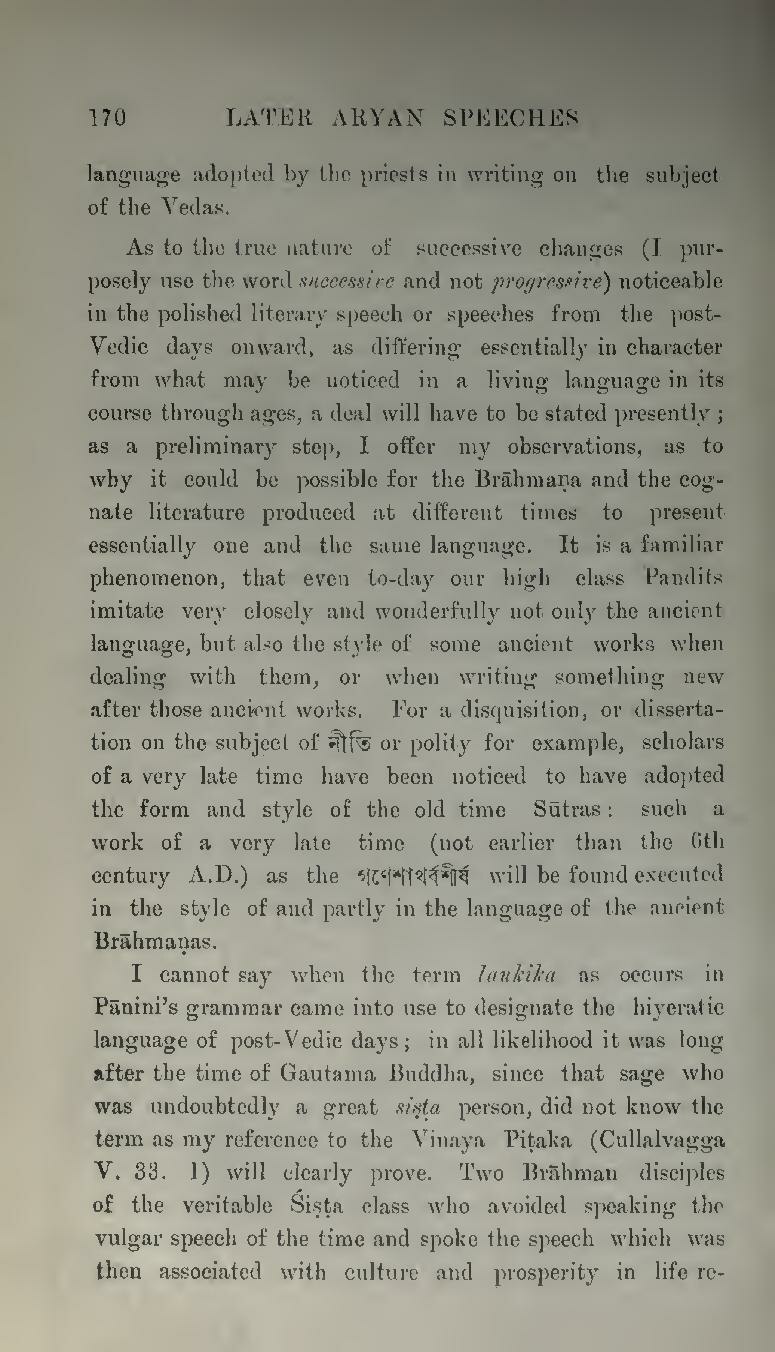language adopted by the priests in writing on the subject of the Vedas.
As to the true nature of successive changes (I purposely use the word successive and not progressive) noticeable in the polished literary speech or speeches from the post-Vedic days onward, as differing essentially in character from what may be noticed in a living language in its course through ages, a deal will have to be stated presently; as a preliminary step, I offer my observations, as to why it could be possible for the Brāhmaṇa and the cognate literature produced at different times to present essentially one and the same language. It is a familiar phenomenon, that even to-day our high class Pandits imitate very closely and wonderfully not only the ancient language, but also the style of some ancient works when dealing with them, or when writing something new after those ancient works. For a disquisition, or dissertation on the subject of নীতি or polity for example, scholars of a very late time have been noticed to have adopted the form and style of the old time Sūtras: such a work of a very late time (not earlier than the 6th century A.D.) as the গণেশাথর্বশীর্ষ will be found executed in the style of and partly in the language of the ancient Brāhmaṇas.
I cannot say when the term laukika as occurs in Pānini's grammar came into use to designate the hiyeratic language of post-Vedic days; in all likelihood it was long after the time of Gautama Buddha, since that sage who was undoubtedly a great siṣṭa person, did not know the term as my reference to the Vinaya Piṭaka (Cullalvagga V. 33. 1) will clearly prove. Two Brāhman disciples of the veritable Śiṣṭa class who avoided speaking the vulgar speech of the time and spoke the speech which was then associated with culture and prosperity in life re-
